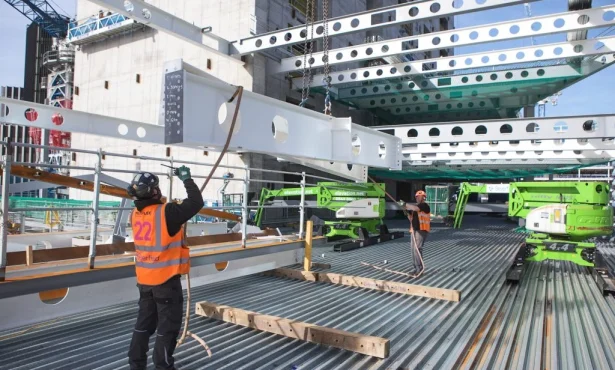In 2020, Housing Secretary Robert Jenrick published proposals for more changes to the planning system, with the aim of encouraging more house building in city centres and above busy hubs such as railway stations. ‘Permissions in Principle’ and the brownfield land register, has been in existence since 2017. It was put in place to encourage the building of commercial and residential constructions on previously developed areas over greenfield sites. In the latest proposed changes, developers wanting to demolish vacant commercial, industrial, and residential buildings to replace them with housing will get fast-track planning.There is high demand for housing in the UK and over 2500 railway stations.
Building above train stations is potentially an ideal way to work around existing infrastructure to create new homes. Funders are frequently interested in schemes such as these, as they not only encourage social mobility, but the clear access to public transport encourages tenants and owners to minimise their impact on the environment by reducing car usage in the future.
However, the potential for improving the amount of housing available by developing around existing transport systems is not without its challenges.
Vibration isolation considerations when building above railway buildings
Apart from the obvious civil engineering challenges, a major challenge for developing sites above or near train stations (as well as underground travel networks such as the London Underground and roads) is the existence of ground-borne vibration, which can be transmitted through the structural system. These vibrations are not just a potential annoyance to occupants and a possible reason not to buy, but a potential risk to the inhabitant’s health.
In the interests of health and wellbeing, rest and sleep are crucial.
The World Health Organization Night Noise Guidelines for Europe 2009 report showed that at or above LAmax,fast =32 dB there is sufficient evidence for biological effects of noise on sleep. Changes to sleep structure long term can increase chances of high blood pressure, heart disease, weight gain, diabetes, cognitive ability, and mental health problems.
In order to support buildings and building structures, it is essential that vibration control solutions are used, as they provide protection from low-frequency ground-borne noise and vibration generated by trains and public transport networks. In addition, these vibration control solutions will assist with any other surrounding noise or vibrations associated with living in an urban area such as traffic and nearby social activity.
Overcoming buyer uncertainty
Uncertainty about living above something as lively as a railway station isn’t as high as you would think, as long as you can provide reassurance and demonstrate that vibration and acoustic isolation is in place.
Location is a key consideration when buying or renting a home – transport for work, travel for socialising, and what is in the surrounding area. A property developed above or near a railway station is going to provide excellent transport links as well as being close to other local amenities.
Real-world residential development above railway stations
Ashley Road East (ARE) is a new 183-unit mixed-use development located in Tottenham Hale, set to play an important role in defining the area’s regeneration with the construction of two residential blocks, retail and office space.
It was an underused area of older commercial properties, ideal for redevelopment because of its central location, the need for housing in the area as well as commercial properties and removing the need to use any greenfield land. However, the London Underground Victoria Line runs to the south and east of the site, and the Northumberland Park Spur runs beneath the site.
Recently built Anthology Tottenham Hale is made up of 279 homes and several commercial units and faced slightly different challenges. In addition to being based right next to Tottenham Hale train and tube station, it’s also placed directly above a main road into central London. At 30 stories high, height was an additional consideration in terms of managing vibrations and ensuring structural integrity.
In both incidences, building on top of these train lines, tube tunnels, and roads was made possible with vibration isolation, making better use of space already built on with fantastic public transport links.
Find out more
To visualise how Farrat building components are used to isolate multi-storey developments located above, adjacent or between railway lines, watch our latest construction sequence videos below:
Or Contact us for more information on how you might build over and around railway stations, moving forward using state-of-the-art building vibration isolation.







